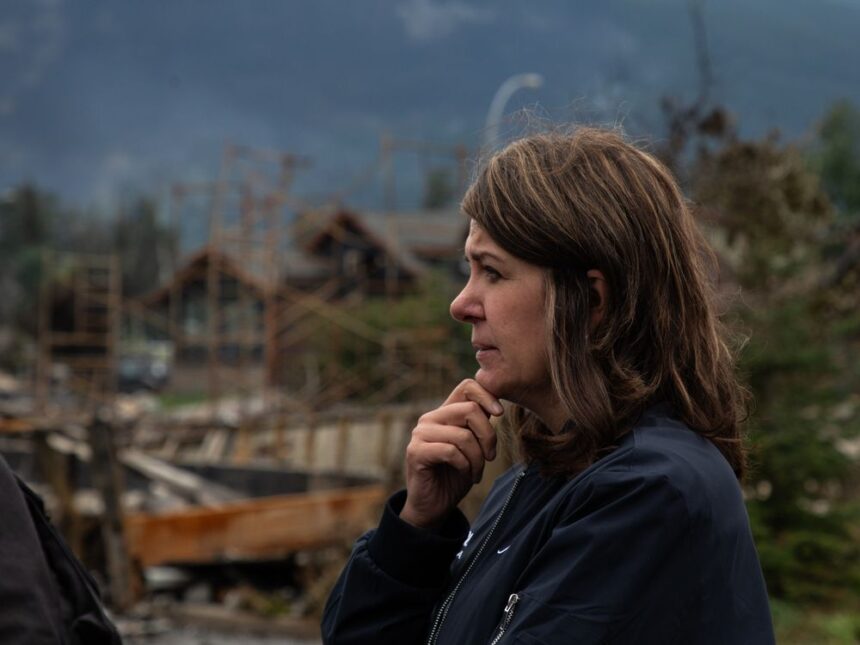The smoldering aftermath of Jasper’s devastating July wildfire has ignited a heated political controversy, as Alberta Premier Danielle Smith demands an apology from Parks Canada following a third-party report that scrutinized the disaster response. The tension exemplifies how natural disasters increasingly become battlegrounds for jurisdictional disputes in an era of intensifying climate challenges.
Premier Smith seized upon findings from the independent FPInnovations report, claiming it validates her government’s criticism that Parks Canada failed to adequately prepare for and respond to the catastrophic wildfire that destroyed approximately 30 percent of the beloved mountain town’s buildings. During a press conference Wednesday, Smith characterized the report as evidence of Parks Canada’s “refusal to call for help early,” a decision she asserts directly contributed to the scale of destruction.
“When you look at this report, it vindicated every single concern that we raised,” Smith stated emphatically. “I think there is a lot of explaining to do, and I think that Parks Canada owes an apology to the people of Jasper.”
However, officials from Jasper have pushed back strongly against the premier’s interpretation. In a pointed statement, they claimed Smith mischaracterized the report’s findings, noting that the document explicitly states that “all reasonable actions to prevent the Jasper townsite from being impacted by the fire were taken by Parks Canada and supporting agencies.”
The FPInnovations analysis, commissioned by Parks Canada, presents a more nuanced view than Smith’s characterization suggests. While identifying some shortcomings in preparedness, it specifically refutes accusations that Parks Canada rejected assistance. Instead, it noted that “no evidence was found that Parks Canada refused offers of help from any partner agency,” directly contradicting one of the premier’s central claims.
The 52-page report, released Tuesday, did identify several areas for improvement, including better coordination with municipal firefighting resources and acknowledging that Parks Canada’s internal wildfire management capability “was exceeded by the complexity of the wildfire situation.” These technical findings have since become political ammunition in the ongoing tension between federal and provincial authorities.
Parks Canada has maintained that it requested assistance from numerous partners as the situation deteriorated, including the Alberta government. The agency stated that it had already begun implementing changes based on the report’s recommendations, focusing on enhanced coordination and communication protocols for future disaster responses.
For residents of Jasper still rebuilding their lives amid the charred remnants of their community, the political finger-pointing provides little comfort. The town, which relies heavily on tourism for its economic survival, faces a challenging recovery period that transcends jurisdictional boundaries.
The dispute highlights the broader challenges of disaster management in Canada, where overlapping responsibilities between federal, provincial, and municipal authorities can complicate emergency responses. Climate scientists have warned that as wildfires become more frequent and intense across the country, these coordination challenges will only grow more pronounced.
Environmental policy experts have noted that the Jasper situation reflects a troubling pattern where post-disaster analysis becomes politicized, potentially undermining the collaborative approach needed to address climate-related emergencies. The controversy raises important questions about how different levels of government can better coordinate their disaster response efforts in an increasingly volatile climate reality.
As reconstruction efforts continue in Jasper, a fundamental question remains: Will this political controversy lead to improved disaster preparedness, or simply deepen the divides between those responsible for protecting communities from natural disasters that recognize no jurisdictional boundaries?

























